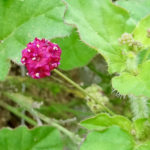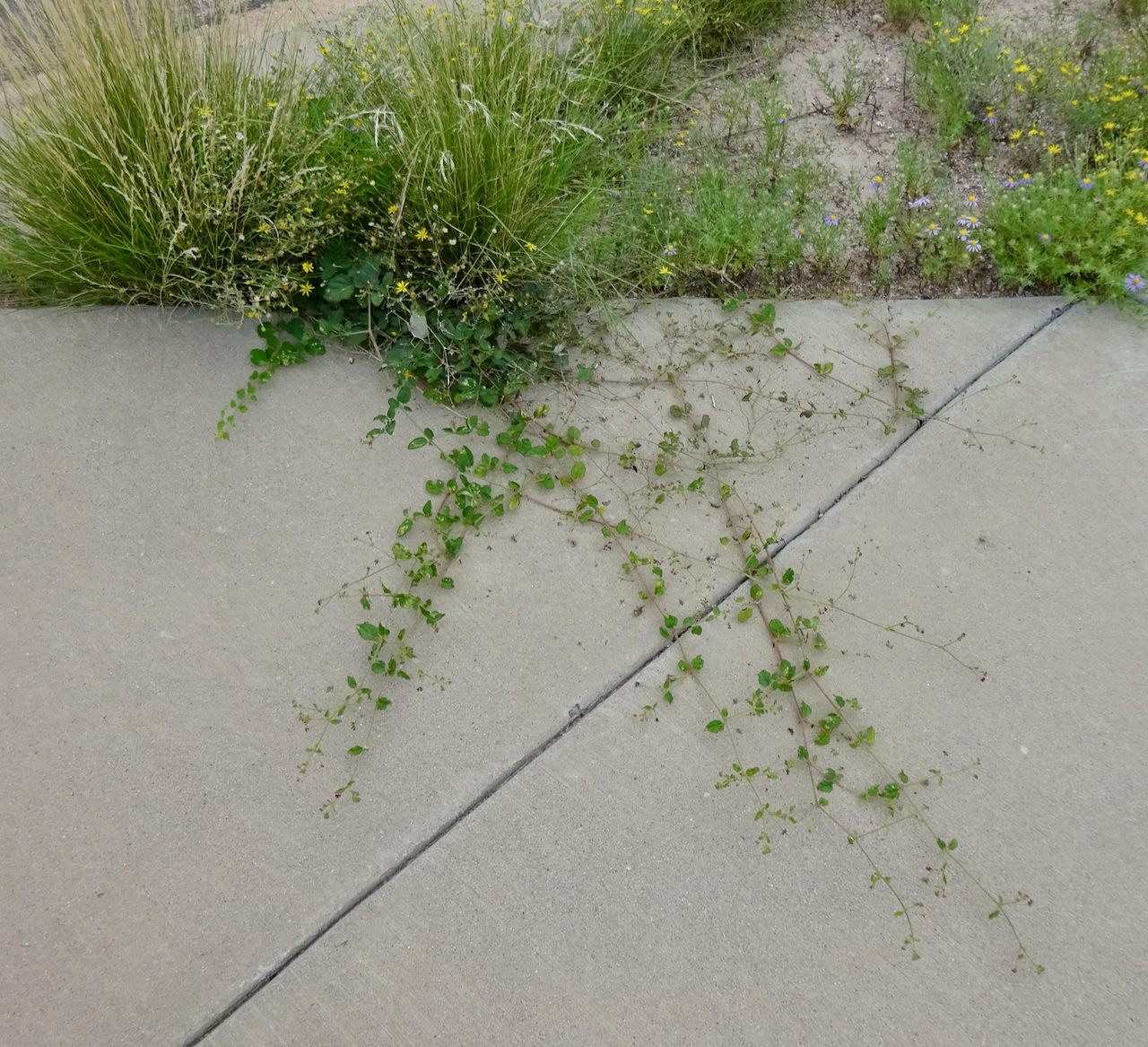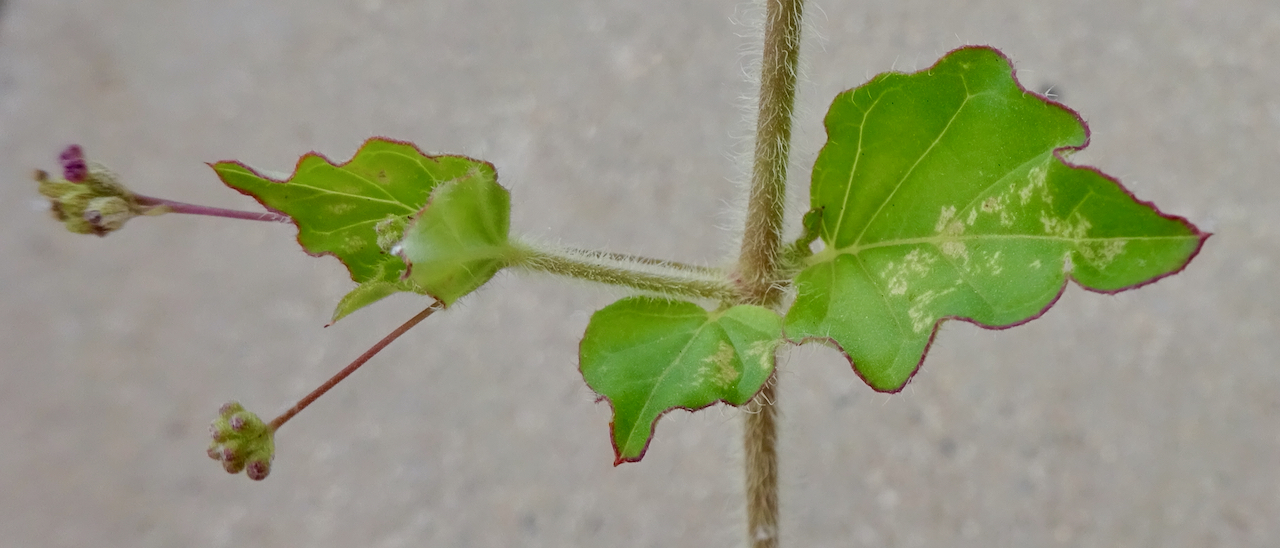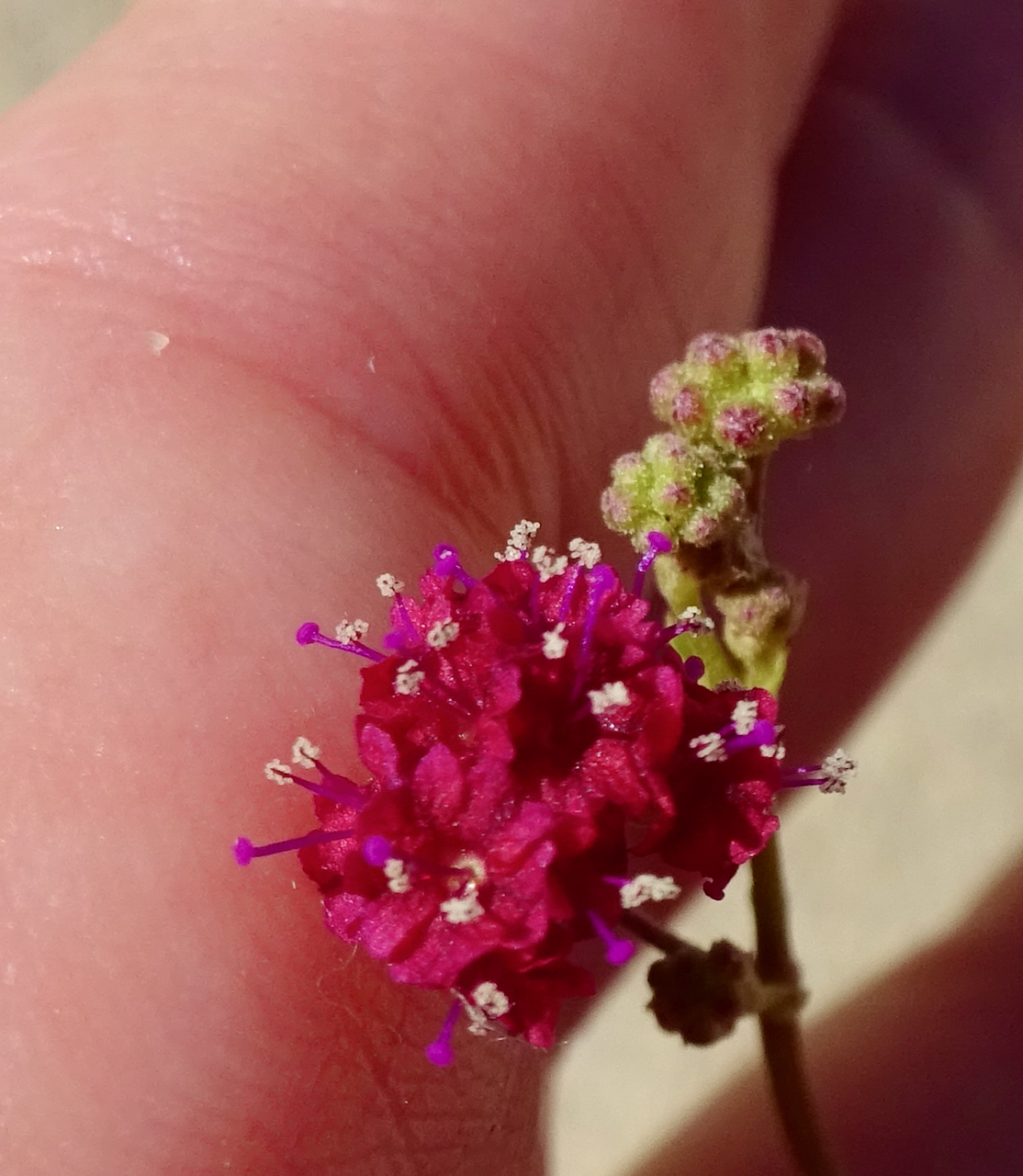Red Spiderling
Boerhavia coccinea

About the Plant
Red spiderling is a prostrate perennial native to the desert Southwest, perhaps native to the Old World as well. It is certainly found worldwide and is considered a weed in most places. The slender, hairy stems can stretch more than a yard from the plant's center. You will most often find this plant in disturbed or waste places, especially at road or curb edge.
Red spiderling begins growing with the monsoon rain and flowers soon after. The tiny but bright red flowers are quite noticeable but overall the plant is not ornamental.
Notes: The other common summer-blooming four o'clocks in our area are Coulter spiderling (Boerhavia coulteri) and trailing windmills (Allionia incarnata).
More Information
Weekly Plant on summer-blooming four o'clocks
Map of distribution in US (blue indicates plant present but not native)
Technical botanical description from SEINet


